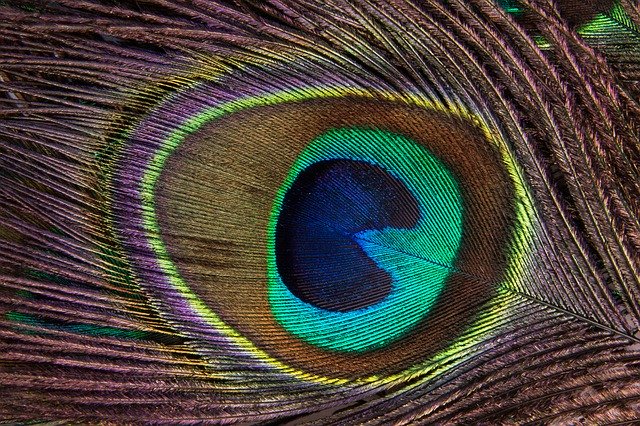The natural world is full of dazzling colours, from the ever-changing camouflage of the octopus to the vivid mating displays of tropical birds. The way these creatures look depends on what happens to white light when it shines on them. Colour often arises from pigments – special chemicals in the skin or feathers that absorb some colours, while other colours are reflected. When we colour the walls of our house with paint, or colour our clothes using dyes, we also rely on this effect.
To achieve the most spectacular colours, nature requires more than pigments. The most intense and iridescent colours arise from a phenomenon called light interference, which occurs due to the wave-like nature of light. If you’ve ever seen the dazzling tail-feathers of the peacock, then you’re already familiar with this effect and the kind of beautiful colour it can produce. To produce colour using light interference, the materials that make up the peacock feather must be arranged into a particular structure that enhances the reflection of certain colours. This so-called “structural colour” can be found in many living creatures, including many birds and beetles you may be familiar with, such as the dark green feathers on a mallard duck.
In my research, I study how to create structural colour using sustainable materials, inspired by what we see in the natural world. One of the major challenges is creating the right structure to produce colour, and I am interested in the underlying physical mechanisms that give rise to these structures.
NanoDTC Student, c2017
Photo from: https://pixabay.com/photos/peacock-feather-peacock-structure-186339/

